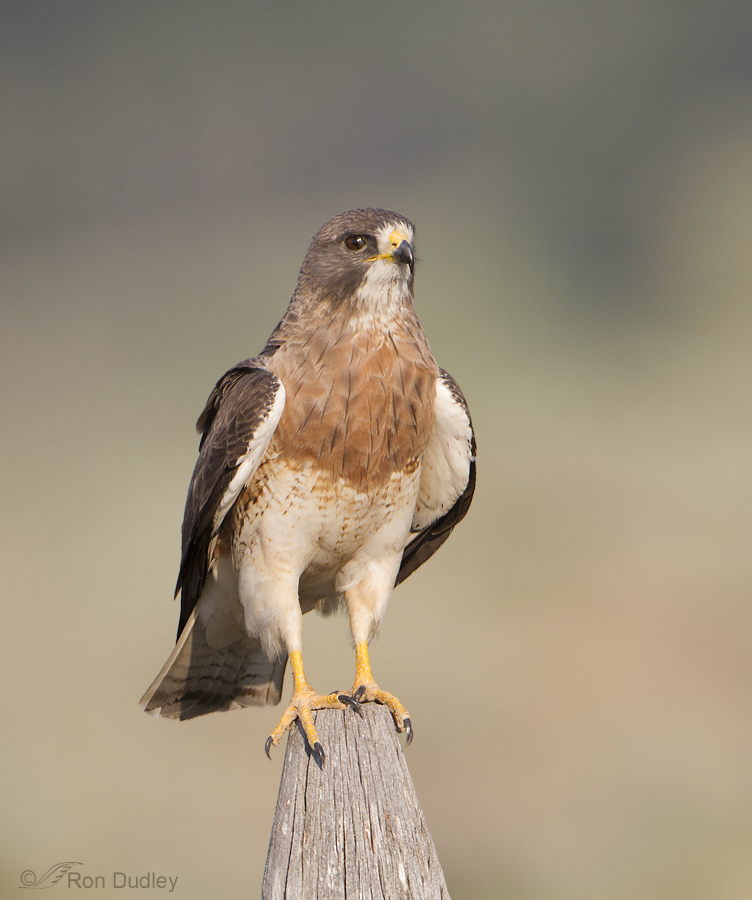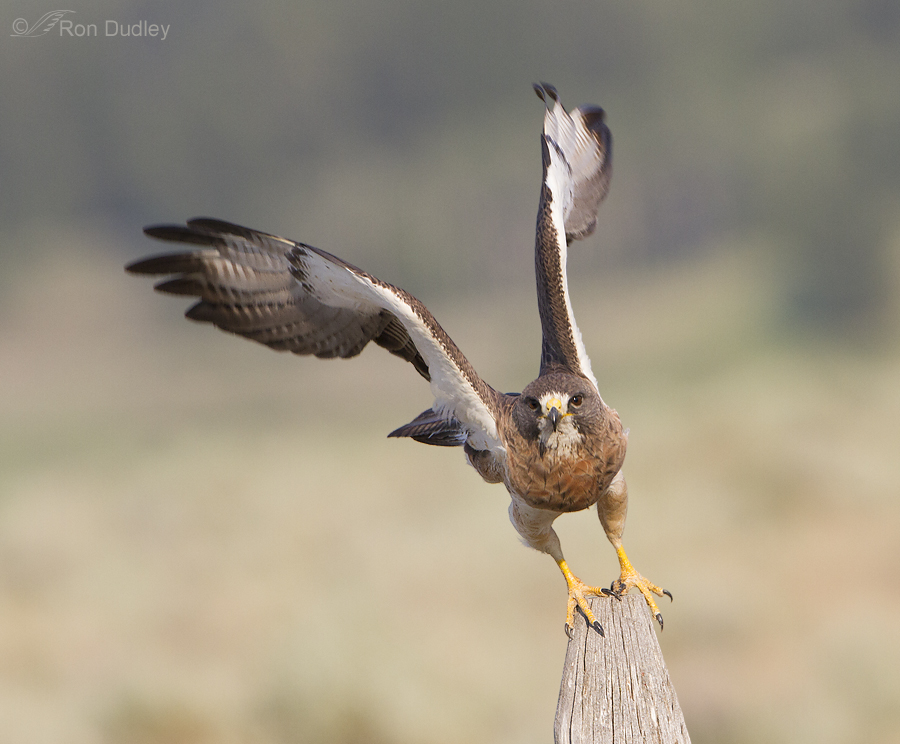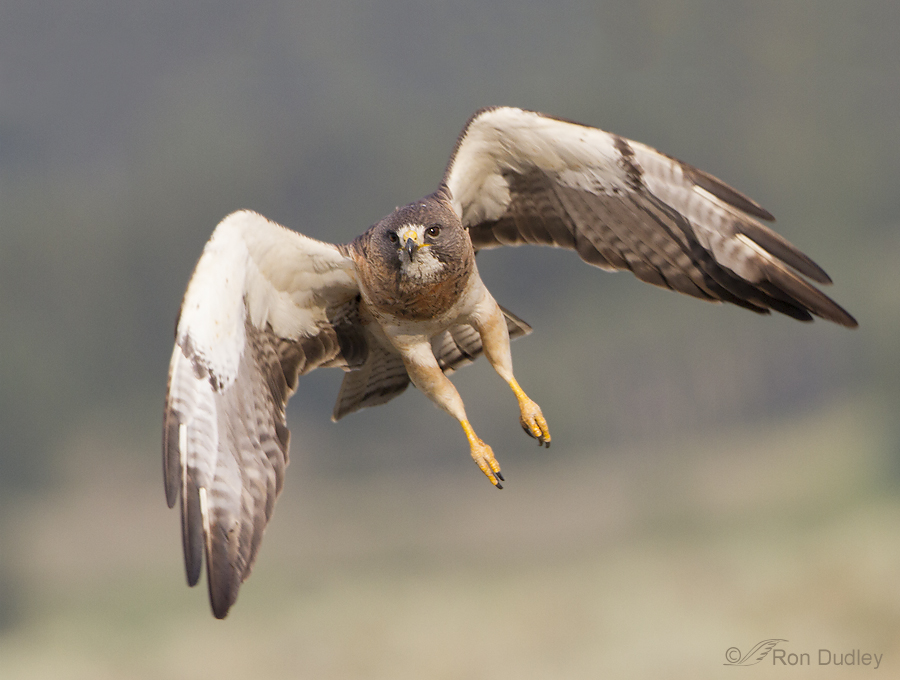My last post was of a juvenile light morph Swainson’s Hawk transitioning into a subadult, todays bird is an adult light morph and my next post will be of a dark morph Swainson’s (and perhaps an intermediate morph also) – this is turning into a series…
The birds in all three posts were photographed on my last trip to southwest Montana, July 21 – 26, 2013.
1/1600, f/5.6, ISO 640, 500 f/4, 1.4 tc, not baited, set up or called in
Adult light morph Swainson’s have a distinctive dark breast “bib”. This hawk posed nicely for me before it decided to leave its perch.
1/1600, f/7.1, ISO 640, 500 f/4, not baited, set up or called in
When it did so it surprised me by launching almost directly toward me…
1/1600, f/7.1, ISO 640, 500 f/4, not baited, set up or called in, canvas added for composition
and I only got this single shot in flight without clipping anything.
I’ve had success with this species this summer in Montana but so far I’m striking out with them in Utah. I know they’re here but I’m not finding them in places where I have in the past.
I hope to find some here before they head to Argentina for the winter.
Ron





Classic Swainson’s! Love everything about that first image!
breathtakingly pretty boy!!!!!!!!!! does the heart good to see such beauty!!!
I love the “coming at you” angle of the flight shots of this beautiful bird.
Thank you, Dave. I like that flight angle too.
Oh my. Dark, light or brindle – they are all beyond beautiful. Thank you so very much. You enrich my world.
I agree, Elephant’s Child – all the morphs are real lookers.
Wonderful, Ron! I happen to have an orphan Swainson’s chick right now that is spectacular. The legs, the belly and underwings are almost pure white, while the back, wings, and head are dark chocolate brown. Each back feather is dark with a lacy white edge. The bib is reduced to a necklace of dark spangles on white. He/she has almost none of the golden rust that usually tie the colors together. The bird will be released soon, so there is no way to know how he’ll change as he matures. They are such individuals. I wonder if they are attracted to mates that look just like good ‘ole mom or dad?
Sounds like a great looking young bird, Mikal. I hope it does well when released.
Beautiful shots, and a question: Which color is most common?
Tana – light morphs are the most common. About 90% of most populations are light morphs though dark morphs occur more often in the far west than they do elsewhere.
They’re a very handsome raptor in this morph! Another nice series.
I appreciate the nice comment about the series, Sonja.
These shots simply take my breath away! No one could look at them and not love birds!
Charlotte NOrton
Thanks very much, Charlotte.
Hi Ron, Thank you! A beautiful installment in the “series”!
I found a mated pair in our area this year – he is an intermediate (rufous) morph, and she is a VERY dark morph. Looking forward (as always) to what comes next. Thanks again!u
Thank you, Dick. I finally had some chances with an intermediate morph this morning. Didn’t turn out perfectly but not too bad either…
So beautiful. I’m in Idaho right now and hope to see one. Last year I had the privilege to see one here.
I hope you see more than one, Sharon – each of the color morphs would be nice…
DITTO!!!!
Gorgeous!!!
Thanks, Patty.